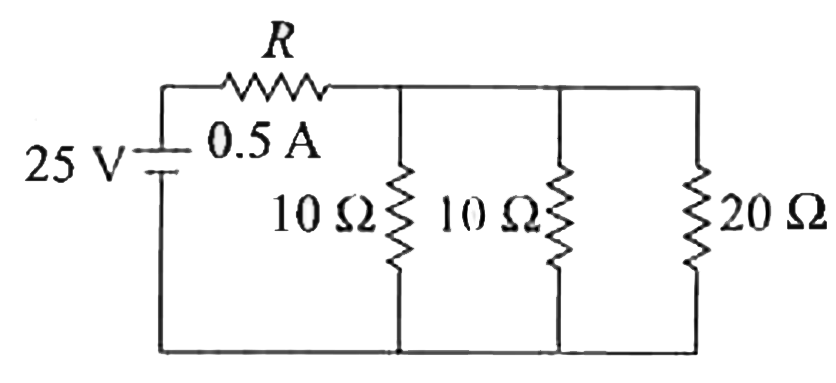Complete Solutions to Kirchhoff s law and simple circuits of chapter ELECTRIC CURRENT & CIRCUITS of Class 12 book with complete answers and questions
| Class 12 | PHYSICS |
| Chapter | ELECTRIC CURRENT & CIRCUITS |
| CENGAGE PHYSICS DPP | Kirchhoff s law and simple circuits |
| Number Of Questions | 15 |
| Academic Year | 2023-24 |
In the circuit element given here, if the potential at point `B = V_(B) = 0`, then the potentials of `A` and `D` are given as

View SolutionThe magnitude in `i` in ampere unit is

View SolutionIf in the circuit shown below, the internal resistance of the battery is `1.5 Omega` and `V_(P)` and `V_(Q)` are the potential at `P` and `Q` respectively, what is the potential difference between the point `P` and `Q`?

View SolutionIn the circuit shown below `E_(1) = 4.0 V, R_(1) = 2 Omega, E_(2) = 6.0 V, R_(2) = 4 Omega` and `R_(3) = 2 Omega`. The current `I_(1)` is

View SolutionConsider the circuit shown in the figure. Both the circuits are taking same current from battery but current through `R` in the second circuit is `(1)/(10) th` of current through `R` in the first circuit. If `R` is `11 Omega`, the value of `R_(1)`

View SolutionCurrent through XY of circuit shown is

View SolutionIn the circuit of adjoining figure the current through `12 Omega` resister will be

View SolutionThe circuit is shown in the following figure. The potential at points A, B, C, D and O are given. The currents in the resistance `R_(1), R_(2)` and `R_(3)` are in the ratio of `4:2:1`. What is the ratio of resistance `R_(1),R_(2),R_(3)` and `R_(4)` ?

View SolutionIn the circuit as shown if the current drawn through battery is `0.5A`. Then

View SolutionConsider a simple circuit shown in Fig. 2(ET).2. stands for a variable resistance R'.R' can vary from `R_(0)` to infinity. r is internal resistance of the battery `(rltltRltltlR_(0))`

View SolutionThe circuit consists of resistors and ideal cells. `I_(1)` and `I_(2)` are current through branches indicated in the figure, `V_(A)` and `V_(B)` is the potential at points A and B on the circuit

The value of `I_(2)/I_(1)` is:
View SolutionThe circuit consists of resistors and ideal cells. `I_(1)` and `I_(2)` are current through branches indicated in the figure, `V_(A)` and `V_(B)` is the potential at points A and B on the circuit

The value of `V_(A) - V_(B)` in volts is:
View SolutionIn the given circuit, if resistance of each resistor is R:

Find the equivalent resistance between M and N,
View SolutionIn the given circuit, if resistance of each resistor is R:

How much current will flow through resistor 1, if current entered at M is I:
View SolutionIn the given circuit, if resistance of each resistor is R:

The equivalent resistance between M and Q.
View Solution
Kirchhoff s law and simple circuits questions and complete solutions for chapter ELECTRIC CURRENT & CIRCUITS of CENGAGE PHYSICS (HINGLISH) of Class 12